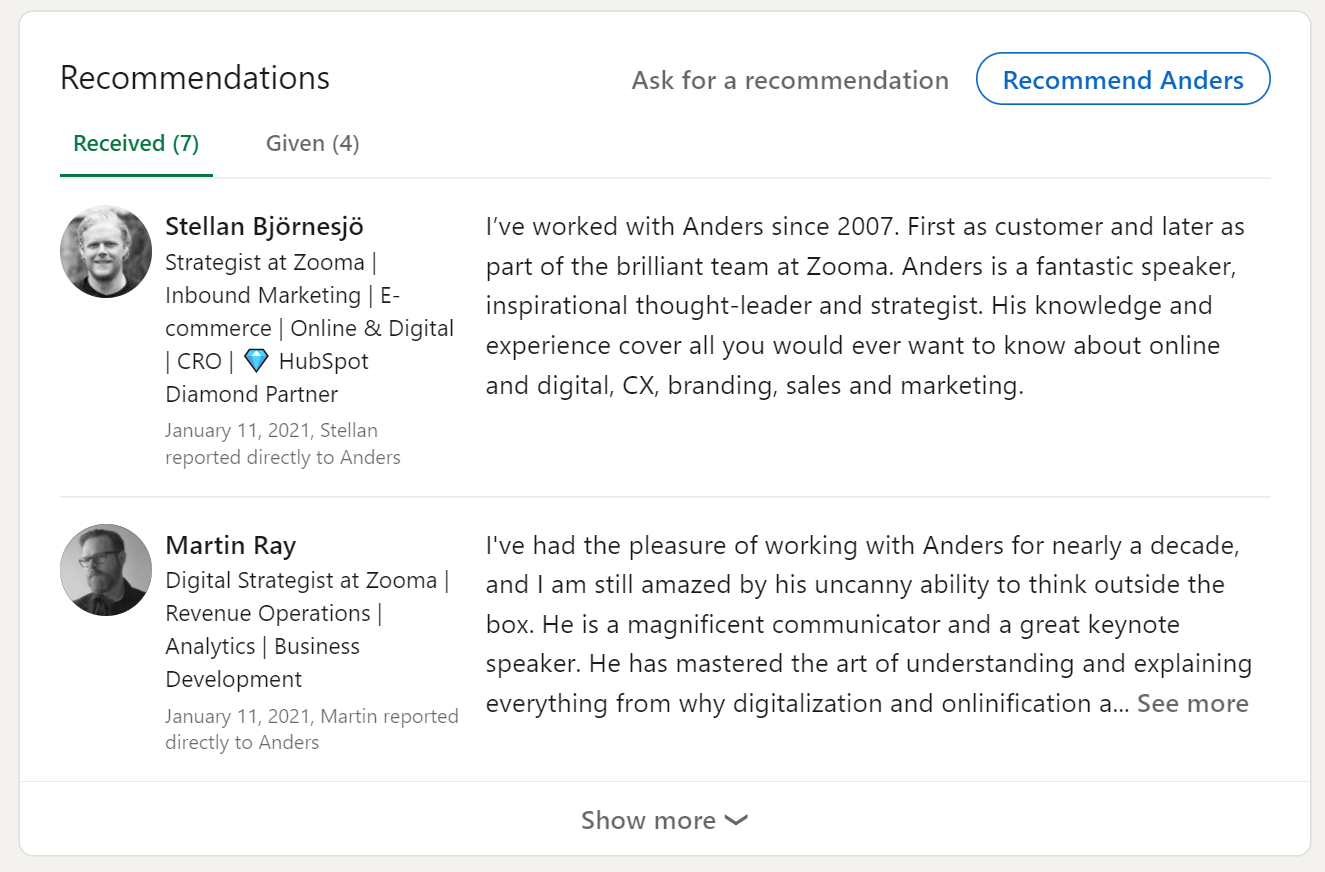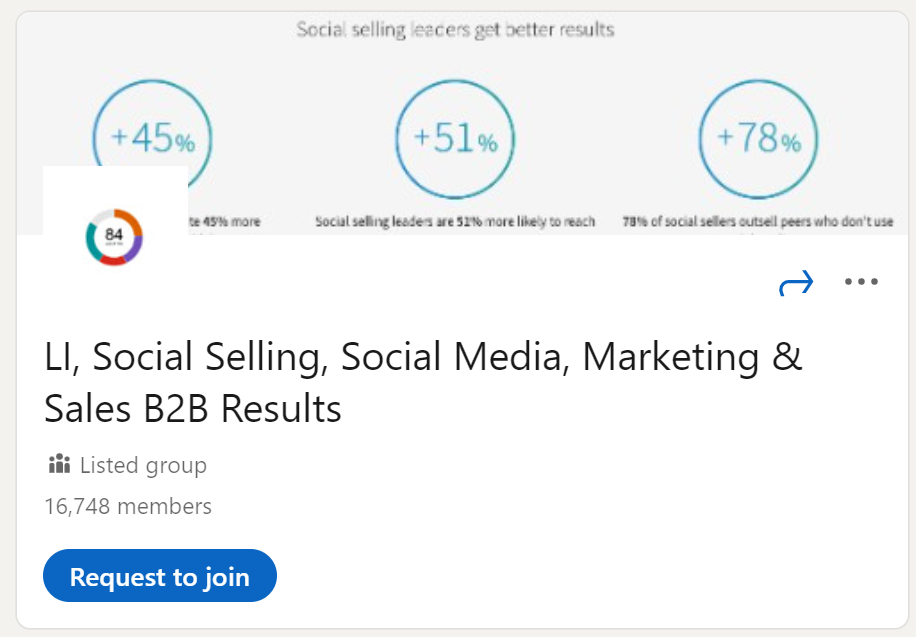- Learn
- The Onlinification Hub
- Social selling is social, not selling
Social selling is social, not selling

Many sales leaders, teams, and representatives eagerly embrace social selling as a new business-driving method. However, it is important to understand the true nature of social selling and the desired outcomes before diving in.
However, while this excitement around a new method of selling is encouraging, diving in hastily can be useless if you don't understand what social selling is or what outcomes you are looking to achieve.
Many talk about social selling like they used to talk about 'big data'. Right now, the social selling approach from sales representatives is primarily manual. They most likely spend a vast amount of time trying to identify leads on SoMe touchpoints and trying to engage with them. Perhaps many think: sell first and act on SoMe second. In my world, that is a backward approach.
It's called social selling because it's firstly about connecting socially, and selling comes second. So a better naming might be online relations, as a core part of how you do business and sell.
Social selling is a powerful approach focusing on building connections and engaging with contacts through social media platforms. By connecting with potential and existing customers, social selling positions you as the preferred choice when they are ready to purchase. It replaces or complements outdated sales techniques and emphasises meaningful, helpful, and relevant interactions.
Understanding social selling
Social selling is about connecting socially first and selling second. It involves using social media touchpoints to establish and nurture relationships with contacts. It is a modern form of relationship-building that enables you to be top-of-mind when customers are ready to buy. Social selling replaces traditional methods and offers a more effective way to engage prospects and customers.
Defining social selling
Social selling is using social media touchpoints to connect and engage with contacts. It is a form of modern relationship-building involving potential and existing customers on social media platforms. By leveraging social selling, you can become the preferred choice for customers when they are ready to make a purchase, replacing outdated sales techniques with a more effective approach.
What social selling isn't
Social selling is not about bombarding the unknown with unsolicited messages and spam. It is not simply adding new contacts to your list without meaningful interactions. Social selling focuses on making interactions meaningful, helpful, and relevant. It involves providing guidance or suggested solutions to challenges or problems. By doing so, you build trust and credibility with your audience.
Effective strategies for Social selling
Determine what outcome you want each SoMe connection to have first, then work backwards. The result could be, e.g., to get a meeting. Discover your desired outcome to give you a starting point around building your entire social selling approach and motivation.
If your company has a LinkedIn page or is active on any other platform, you're already engaged in the basics of social selling. However, if you and your colleagues want to learn more about social selling, take HubSpot Academy's social media-related courses and certifications or LinkedIn's social selling course.
What is the Social Selling Index (SSI)?
The social selling index (SSI) is LinkedIn's metric used to measure the impact of social selling efforts on LinkedIn.
LinkedIn introduced the concept of their SSI 2014. LinkedIn's SSI combines four components to establish a score. First, it looks at if you:
- Establish a professional brand with a well-managed LinkedIn profile.
- Find the right people on the platform.
- Share relevant, conversation-inspiring content.
- Build and strengthen relationships.
To find your LinkedIn SSI, sign in to your account and go to your Social Selling Index dashboard. Use your score as the starting point to improve your LinkedIn performance.
Your company should prioritise Social selling
If you're still not sold on social selling, here are four reasons to prioritise it.
Social selling works
Don't just take my word for it. According to LinkedIn Sales Solutions' data:
- Companies leaders in the social selling space create 45% more sales opportunities than brands with a low social selling index.
- Companies prioritising social selling are 51% more likely to reach their sales targets.
- 78% of companies that use social selling surpass companies that don't use social media.
Social selling helps your sales team build genuine relationships.
Relationship building and networking have shifted online due to the COVID-19 pandemic — and now is the perfect time to prioritise social selling.
Social selling creates opportunities to connect with potential and existing customers online and on social media. In addition, you can use social listening tools to go a step further and identify leads who are already talking about your company, competitors, or the industry.
Social listening means you can reach out to an audience interested in what you offer and connect with them, offering helpful information and advice at the right time. Authenticity builds trust — and in turn, can become customer loyalty.
Your potential and existing customers already engage in social buying
Considering the sheer volume of people currently using social media, companies have enormous potential to make social sales. And many of those users are using social platforms for research. Simply put, these users are getting ready to buy.
Your competitors practice social selling
To use social selling means to stay competitive. Other companies are active on social media and interact with potential and existing customers.
The best networks for social selling
In short, it depends.
Your preferred platform depends on your target audience and your decided approach to social selling. For example, Twitter and Instagram can be great for interacting with the target audience. They offer tools for messaging and responding to queries and questions, and they're virtual spaces where communication and interactions come naturally. Simply put, they're great for building a relationship.
On the other hand, LinkedIn is a more formal business platform ideal for B2B companies looking to identify and reach business decision-makers. On LinkedIn, companies and people connect with potential and existing customers and build or increase professional relationships:
According to LinkedIn:
- 89% of B2B company marketers use LinkedIn to generate contacts and leads.
- 62% of B2B company marketers say LinkedIn generates leads at twice the next-best performing social channel rate.
If you are a B2B company, my general advice is to prioritise LinkedIn and that you and using it shall become a natural part of how you and your company do business.
Here are some short suggestions for how you could get started on LinkedIn:
Three steps to social selling on LinkedIn
Build credibility
Identify the contacts whom you have a good relationship and ask them for endorsements and recommendations. These will be posted on your LinkedIn profile and can help give you instant credibility with new contacts.

As a company, ensure that your profile highlights relevant expertise and how you've helped customers achieve their desired goals.
You should also only share content from credible sources and maintain a professional tone across all your LinkedIn activities.
Extend the network
Use LinkedIn's search feature to extend your network by seeking mutual connections with your existing contacts. You can also join LinkedIn Groups relevant to your industry to network with peers and prospects.
Use Sales Navigator
LinkedIn's professional social selling tool, Sales Navigator, can help you target the right potential customers with personalised communication and messaging and better understand your performance with in-depth analytics.
Best practices in social selling
Whichever social platform you use to reach your target audience, adopt social selling best practices. Here are four social selling best practices to keep in mind.
Provide value
It's important not to get too " sales-ish " when interacting with potential and existing customers through social media; it's essential not to get too "sales-ish". And if your company is new to social media, don't dive into social selling immediately. Instead, long before you jump to sales pitches, establish your position as an expert in your industry.
One way to build and prepare your brand and credibility for social selling is by sharing relevant, engaging, and valuable content. For B2B companies and business influencers using LinkedIn, this could mean sharing content created by others that aligns with their brand and company. And it might mean creating and sharing engaging content that others will find valuable to establish your company brand or your brand as a knowledge leader. Show your prospects that you're not just out to get something. You're there to give something, too.
Listen and build relationships
Effective social selling means paying attention and ensuring you're social listening—monitoring what people say about you, your company, the industry and competitors. Watch out for challenges, needs and requests, which provide natural opportunities for you to suggest approaches and provide solutions.
It would be best if you leveraged your existing network when possible. Check their followers and following lists to see if you have mutual relations before reaching out to any of the connections or leads you identify. If you do, ask a shared contact for an app introduction.
Keep it real
Instead of writing one note and sending it to countless potential buyers, take the time to personalise every single social selling message. This means that you should:
- Communicate things of presumed high relevance from their perspective.
- Acknowledge that you have mutual connections.
- Highlight shared interest.
So, be yourself. Form the connection by starting a genuine conversation!
Be consistent
Bear in mind you won't get immediate results. So, if your relationship-building efforts don't yield immediate results, continue. Some of your contacts may not be ready to interact with whatever you offer or suggest — keep in touch.
Remember to follow up with contacts. Reach out to the contacts you've previously connected with but haven't interacted with for a while. Ensure you maintain meaningful relationships by communicating with them when they, e.g., move to new positions or change companies. Also, engage with the content they share. And finally, be ready to provide advice or help, even if it doesn't directly promote your offer.
If you're looking to get started with social selling, don't wait - it's better to learn the best methods as you experiment. But if you need a bit more background knowledge, take a look at our in-depth guide to social media for business. It's also available as a downloadable PDF below.




